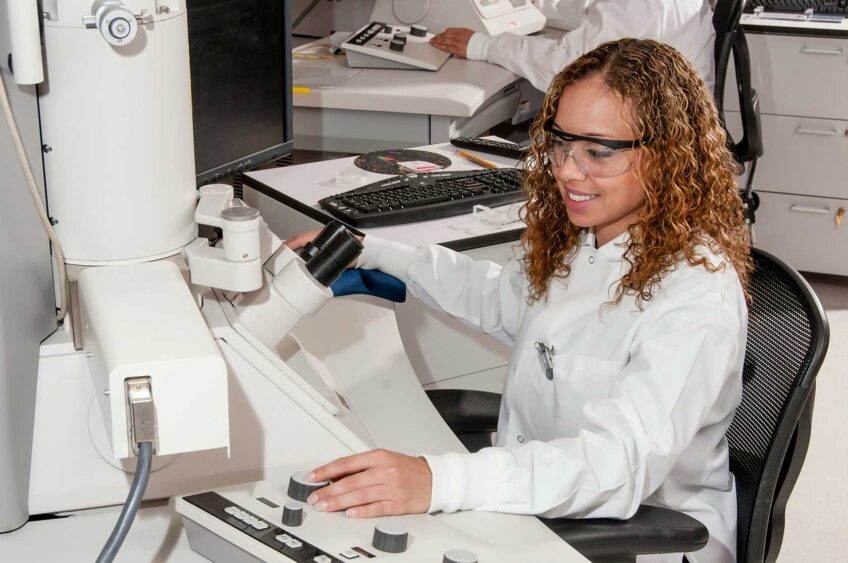BELLEVUE, Wash. — Retired NFL players arrived in shifts last Thursday at Health Force Partners, participating in what might best be described as a medical minicamp, all hoping to make the cut.
While several of the guys greeted each other with wisecracks and back slaps, Alonzo Mitz quietly slipped into the private waiting room and sat down by himself. Mitz last pulled on a Seahawks uniform in 1993, as a speedy and indestructible defensive end. Turning 45 next month, he’s a middle-aged man experiencing battle scars and vulnerability.
“I’ve been having heart palpitations, and I just had some the other day,” he said. “I worry about that. That’s one of the reasons I’m here.”
Mitz was one of 35 former pro football players from the region coaxed to this Bellevue medical clinic for a series of heart screening tests conducted by Denver cardiologist Jeffrey Boone and funded by an alliance of NFL organizations — taking part in an innovative program considered overdue for a violent sport characterized by startling low life-expectancy rates, depending on playing position, of 53 to 59.
Moving from station to station, former Seahawks coach and NFL player Jack Patera, 77, was at the front desk answering questions from a member of Boone’s medical team, while former Broncos running back Floyd Little, 66, now a car dealer, was behind a curtain undergoing testing, and Gary Larsen, 68, a member of the Minnesota Vikings’ vaunted “Purple People Eaters” defensive front, was being examined behind another curtain.
“There’s stuff inside me I don’t know about,” said Terry Metcalf, 56, former St. Louis Cardinals running back and Seattle native. “I just want to be around awhile. I’m not ready to go yet.”
Much like the military, the NFL has long been criticized for turning a cold shoulder to the health concerns of its foot soldiers after battle, accused of casting ailing players aside once their usefulness was expended.
Boone, a Broncos consulting physician, started testing former Denver players for heart attack and stroke probability, examining 100 NFL alumni in four years. He drew plaudits for his precautionary measures, especially after three players last year unknowingly had numbers so far off the charts that they needed immediate hospitalization.
“Hopefully, we’ll screen 10,000 former players over the next few years,” said Boone, who understands the medical insurance opposition to his approach. “It’s kind of like preventing terrorism. It’s nothing exciting.”
A year ago, 10 former pros in Seattle agreed to a trial run by Boone, and three of them were discovered to have significant health risks, including Tom Turnure, 51, a former University of Washington and Detroit Lions center.
Testing found that the lineman had significant arterial plaque deposits in his neck, elevated heart calcium and blood plaque levels double the norm, putting him at great risk for heart attack or stroke. Medicine was prescribed that cut everything in half.
“It was unnerving,” Turnure said. “It changed everything I did this last year. When they tell you that you have the body of a 68-year-old man, it gets your attention.”
Former players range in age from 35 — Trent Pollard, formerly of the Cincinnati Bengals and St. Louis Rams and a Seattle native — to 88 — Ed Heimstra, a former New York Giants guard from Montana.
Pollard, a school behavioral supervisor, weighed 300 pounds when he played and has seen his weight balloon to nearly 400 since retiring, putting his health at extra risk. His wife, Ericka, insisted that he attend the testing in Bellevue.
“She definitely pushed me to come,” Pollard said. “I’ve been fat — excuse me, I mean big — all my life. I need to get back on track. It needs to be done.”
The battery of tests run on each player, some considered cutting edge in discovering plaque buildups, costs between $2,000 and $3,000. An alliance of the NFL, the NFL Players Association, NFL Alumni and the NFL Hall of Fame is picking up the tab for the expanding program.
“There’s so much negativity that nobody cares about the old players,” said Brett Wiese, 41, a former UW and San Francisco 49ers offensive lineman. “That’s not true.”
Besides the inroads made in Denver and Seattle, 54 former players in Phoenix and 20 in Indianapolis recently were tested, and 80 ex-players will be checked in San Diego in two weeks. Reluctant to join in before, the NFL has asked for the results of the former player testing (in anonymous form to ensure confidentiality) to create a database and search for health trends.
“This is the greatest thing for us,” Little, the auto dealer, said. “A lot of players go through struggles after playing, go through divorce. They don’t get jobs. They didn’t make a lot of money or are on fixed incomes and can’t afford these tests.”
Football is a hazardous occupation for several reasons: The game demands oversized players, who are naturally susceptible to cardiac concerns; is heavily reliant on African American players, whose genetic tendencies lead to higher rates of hypertension and diabetes; and, as a contact sport, creates a combination of physical and emotional stresses not seen in other sports.
“You get hit three, four, five times per play, and that’s 40 to 50 plays per game,” Mitz said. “It’s kind of like smashing into a wall going 15 to 20 miles per hour. I was faster than the normal defensive lineman, so I went more like 35 to 40 miles per hour.”
Said Clint Didier, 49, a former Washington Redskins and Green Bay Packers tight end who is now a farmer, “This gets the adrenaline flowing and you get a little uneasy, because you don’t know how you are inside. I hope they don’t find anything.”
The average NFL player plays just 3.52 seasons and loses two to three years off his life expectancy for every season played. Mitz spent six seasons with the Seahawks on top of his four demanding college years at Florida. He knows this could significantly shorten his life.
Several players declined to be tested, either angry with the NFL for past neglect or fearful of the results. Not Mitz.
“I’d rather know than not know,” he said. “This isn’t football anymore. This is fourth-down-and-1 for real.”
(The Seattle Post-Intelligencer)
BELLEVUE, Wash. — Retired NFL players arrived in shifts last Thursday at Health Force Partners, participating in what might best be described as a medical minicamp, all hoping to make the cut.
While several of the guys greeted each other with wisecracks and back slaps, Alonzo Mitz quietly slipped into the private waiting room and sat down by himself. Mitz last pulled on a Seahawks uniform in 1993, as a speedy and indestructible defensive end. Turning 45 next month, he’s a middle-aged man experiencing battle scars and vulnerability.
“I’ve been having heart palpitations, and I just had some the other day,” he said. “I worry about that. That’s one of the reasons I’m here.”
Mitz was one of 35 former pro football players from the region coaxed to this Bellevue medical clinic for a series of heart screening tests conducted by Denver cardiologist Jeffrey Boone and funded by an alliance of NFL organizations — taking part in an innovative program considered overdue for a violent sport characterized by startling low life-expectancy rates, depending on playing position, of 53 to 59.
Moving from station to station, former Seahawks coach and NFL player Jack Patera, 77, was at the front desk answering questions from a member of Boone’s medical team, while former Broncos running back Floyd Little, 66, now a car dealer, was behind a curtain undergoing testing, and Gary Larsen, 68, a member of the Minnesota Vikings’ vaunted “Purple People Eaters” defensive front, was being examined behind another curtain.
“There’s stuff inside me I don’t know about,” said Terry Metcalf, 56, former St. Louis Cardinals running back and Seattle native. “I just want to be around awhile. I’m not ready to go yet.”
Much like the military, the NFL has long been criticized for turning a cold shoulder to the health concerns of its foot soldiers after battle, accused of casting ailing players aside once their usefulness was expended.
Boone, a Broncos consulting physician, started testing former Denver players for heart attack and stroke probability, examining 100 NFL alumni in four years. He drew plaudits for his precautionary measures, especially after three players last year unknowingly had numbers so far off the charts that they needed immediate hospitalization.
“Hopefully, we’ll screen 10,000 former players over the next few years,” said Boone, who understands the medical insurance opposition to his approach. “It’s kind of like preventing terrorism. It’s nothing exciting.”
A year ago, 10 former pros in Seattle agreed to a trial run by Boone, and three of them were discovered to have significant health risks, including Tom Turnure, 51, a former University of Washington and Detroit Lions center.
Testing found that the lineman had significant arterial plaque deposits in his neck, elevated heart calcium and blood plaque levels double the norm, putting him at great risk for heart attack or stroke. Medicine was prescribed that cut everything in half.
“It was unnerving,” Turnure said. “It changed everything I did this last year. When they tell you that you have the body of a 68-year-old man, it gets your attention.”
Former players range in age from 35 — Trent Pollard, formerly of the Cincinnati Bengals and St. Louis Rams and a Seattle native — to 88 — Ed Heimstra, a former New York Giants guard from Montana.
Pollard, a school behavioral supervisor, weighed 300 pounds when he played and has seen his weight balloon to nearly 400 since retiring, putting his health at extra risk. His wife, Ericka, insisted that he attend the testing in Bellevue.
“She definitely pushed me to come,” Pollard said. “I’ve been fat — excuse me, I mean big — all my life. I need to get back on track. It needs to be done.”
The battery of tests run on each player, some considered cutting edge in discovering plaque buildups, costs between $2,000 and $3,000. An alliance of the NFL, the NFL Players Association, NFL Alumni and the NFL Hall of Fame is picking up the tab for the expanding program.
“There’s so much negativity that nobody cares about the old players,” said Brett Wiese, 41, a former UW and San Francisco 49ers offensive lineman. “That’s not true.”
Besides the inroads made in Denver and Seattle, 54 former players in Phoenix and 20 in Indianapolis recently were tested, and 80 ex-players will be checked in San Diego in two weeks. Reluctant to join in before, the NFL has asked for the results of the former player testing (in anonymous form to ensure confidentiality) to create a database and search for health trends.
“This is the greatest thing for us,” Little, the auto dealer, said. “A lot of players go through struggles after playing, go through divorce. They don’t get jobs. They didn’t make a lot of money or are on fixed incomes and can’t afford these tests.”
Football is a hazardous occupation for several reasons: The game demands oversized players, who are naturally susceptible to cardiac concerns; is heavily reliant on African American players, whose genetic tendencies lead to higher rates of hypertension and diabetes; and, as a contact sport, creates a combination of physical and emotional stresses not seen in other sports.
“You get hit three, four, five times per play, and that’s 40 to 50 plays per game,” Mitz said. “It’s kind of like smashing into a wall going 15 to 20 miles per hour. I was faster than the normal defensive lineman, so I went more like 35 to 40 miles per hour.”
Said Clint Didier, 49, a former Washington Redskins and Green Bay Packers tight end who is now a farmer, “This gets the adrenaline flowing and you get a little uneasy, because you don’t know how you are inside. I hope they don’t find anything.”
The average NFL player plays just 3.52 seasons and loses two to three years off his life expectancy for every season played. Mitz spent six seasons with the Seahawks on top of his four demanding college years at Florida. He knows this could significantly shorten his life.
Several players declined to be tested, either angry with the NFL for past neglect or fearful of the results. Not Mitz.
“I’d rather know than not know,” he said. “This isn’t football anymore. This is fourth-down-and-1 for real.”
(The Seattle Post-Intelligencer)






